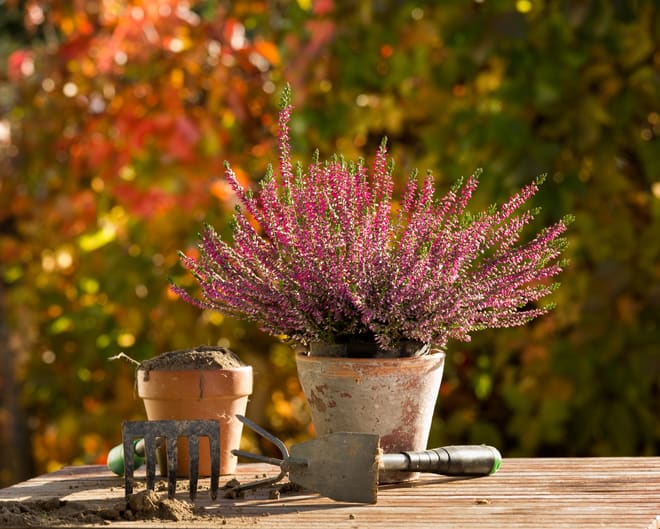Preparing the garden for Winter
It’s that beautiful time of year again when the leaves are turning into a sea of reds and golds. This is the signal to get to work preparing the soil and plants for Winter. The first job we have done is to get a trailer load of sheep poo from a farmer in the hills. Every Autumn you need to top up the poo, so it can break down, encourage worm life and address the clay problem. There is nothing like poo from a farm to enrich your soil with nutrients and beneficial bacteria.
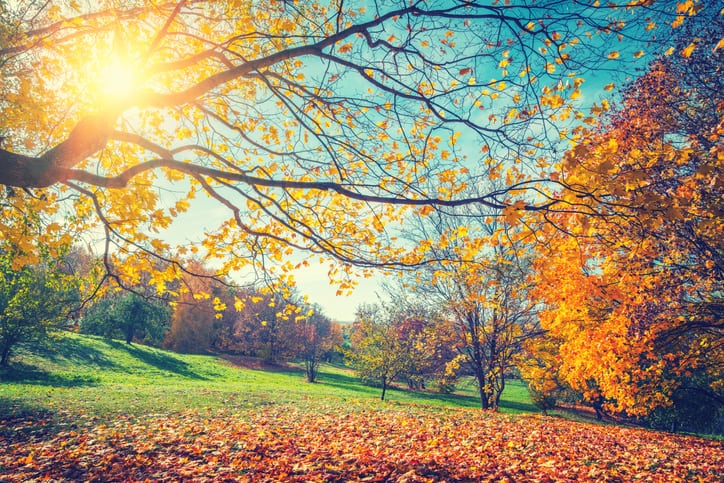
Other jobs to do:
- Take cuttings from plants you want to propagate
- Keep giving the soil a good drenching until the rains come
- Add soil wetting agents if the ground has become hydrophobic
- Use an organic fertiliser to reinvigorate the nutrient levels of your soil
- Cut back leggy salvias
- Trim the lavenders but only by about a third
- Dead-head and fertilise all the roses for a last Autumn flush (We use Sudden Impact for Roses by Neutrog)
- Fertilise the lawn (Also by Neutrog: Sudden Impact for Lawns)
- Trim your hedges
- Address fungal issues
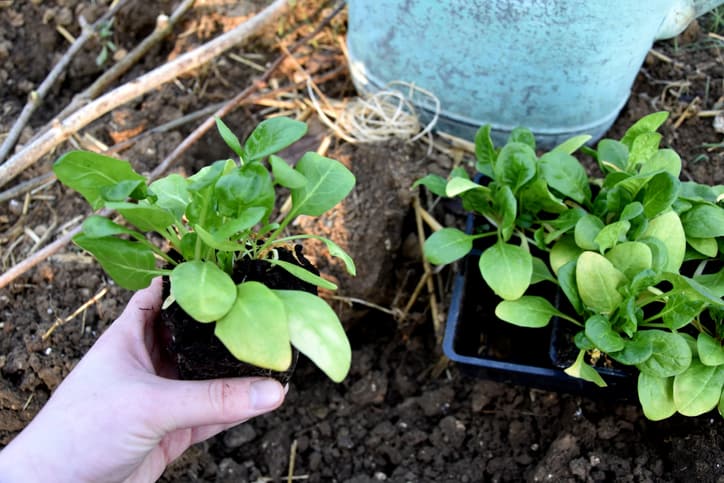
Which vegetables should you plant in Autumn?
The raised garden beds have been cleaned out and old tomato bushes have been removed. Kale that has gone to seed has been replaced with fresh seedlings. Coriander, mint and spinach seedlings share the space. Rainbow chard seedlings have been placed amongst the flowers, following the ancient traditions of South American farmers. They grew everything together, using the principles of companion planting to reduce the incidence of disease and pests. We have a very healthy celery growing right next to our Pierre De Ronsard standard rose!
Other vegetables to consider:
- cabbage
- silverbeet
- bok choy
- rocket
- cauliflower

Which herbs should you plant in Autumn?
- Marjoram
- Thyme
- Oregano
- Sage
- Rosemary
- Lemon Balm
- Different types of mint
- Garlic bulbs
Existing lemon balm and thyme in our garden has been trimmed, and the basil is still providing plenty of beautiful fragrant leaves. I just dead-head the flowers to extend the season. In another month or so I will plant new basil seedlings.
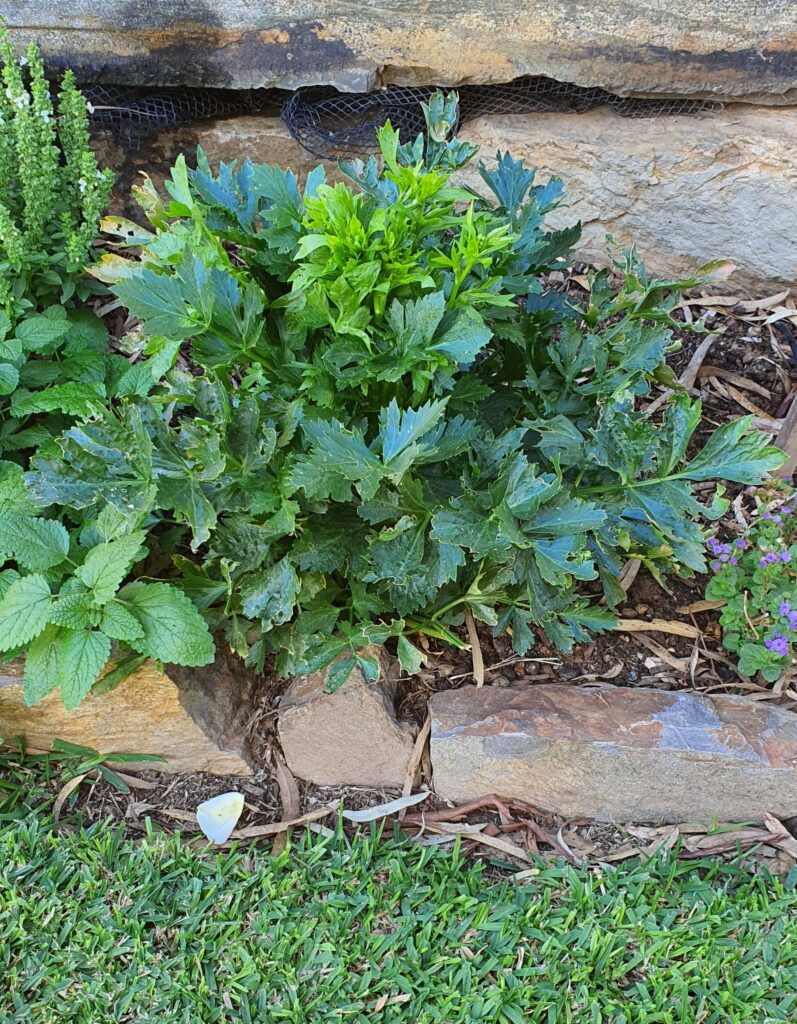
If you are someone who says ‘I can’t grow a thing!’, choose easy plants like Thyme, radishes, lavender, rosemary, sage, lemon-balm, garlic. These all look after themselves to a great extent.
Feed your citrus!
Lemon trees are voracious eaters, they need plenty of special citrus fertiliser and plenty of water. Check that your plants have not dried out too much over Summer.
Sometimes the soil becomes so dry that even when you think you are watering well, it is not reaching the roots. This is particularly true of potted citrus.
This is remedied by the application of wetting agents available at your local nursery. Then keep watering and feeding. Lemon trees also benefit from the occasional application of wee!!

Bulbs
If you haven’t already done so, get your Spring bulbs into the garden now! Daffodils, Jonquils, Dutch Iris, Freesias. Just think of your Grandma’s old-style flower garden, it’s time to plant all those bulbs.
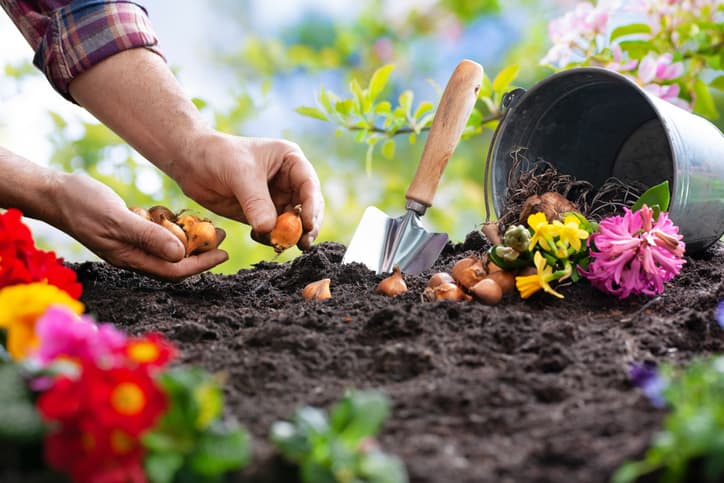
Sweet-peas
Do you have a garden wall or fence to grow sweet-peas on? If you do, this is your last chance to plant beautiful, fragrant and colorful sweet-peas for Spring and Summer flowering.
They are usually planted as seeds in March, but early April is not too late. There is nothing more that says old world flower garden than gorgeous sweet-peas. They are one of my favorite flowers, and my Grandma had them all along the drive-way every Summer.
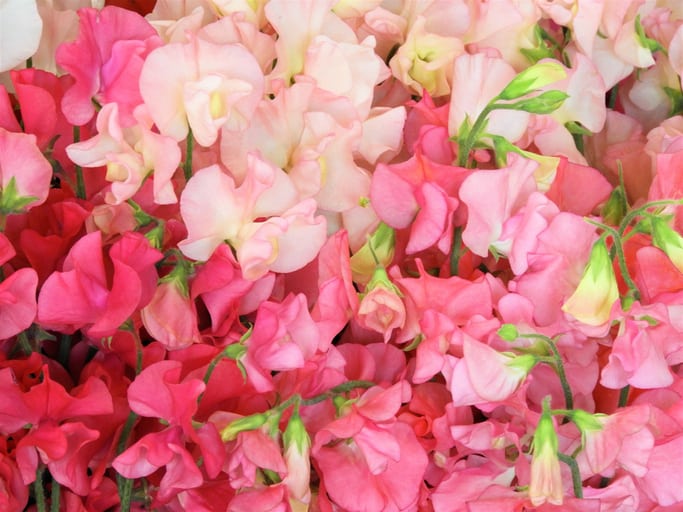
Be aware that modern sweet-peas do not necessarily re-seed themselves as they used to. They have been sterilised so you have to keep buying more. If you want the old style, go for heritage seeds or ask someone who has them in their garden.
Have a wonderful time in your garden on these stunning blue-sky days. Make lists! Don’t get over-whelmed, a bit here and there and you will love your garden for what it gives back to you in the months to come.

